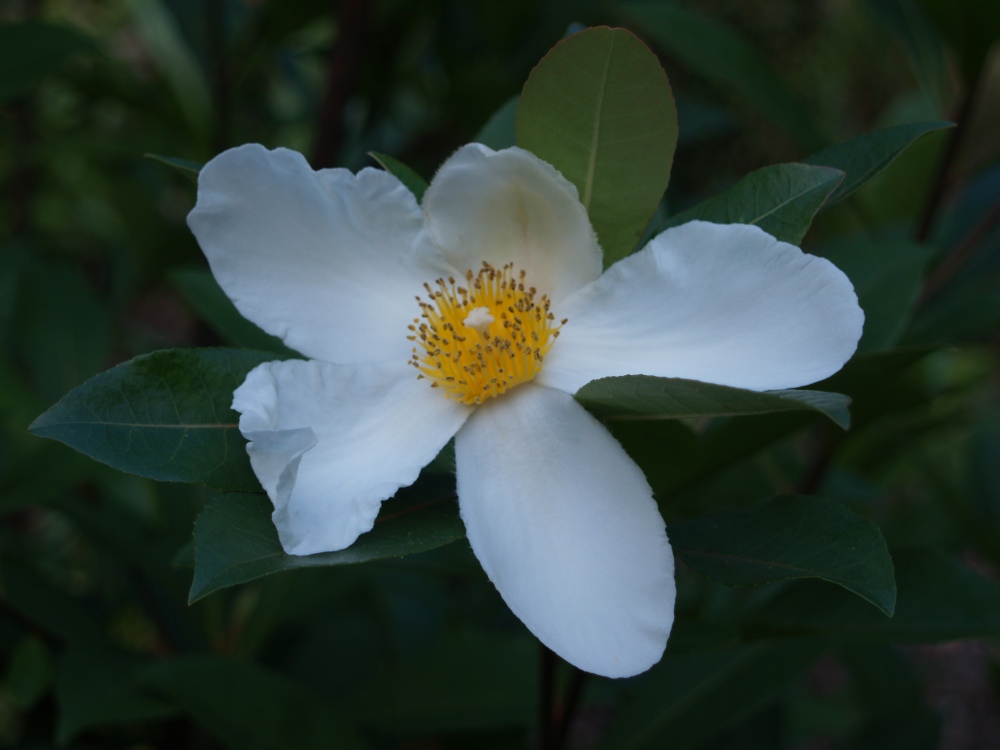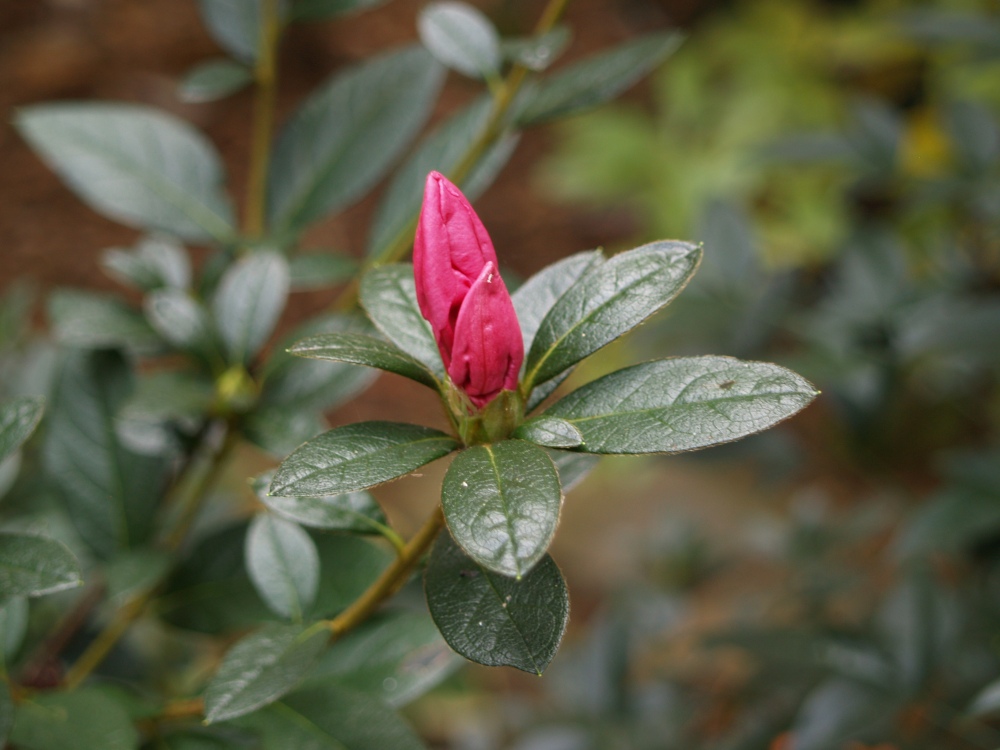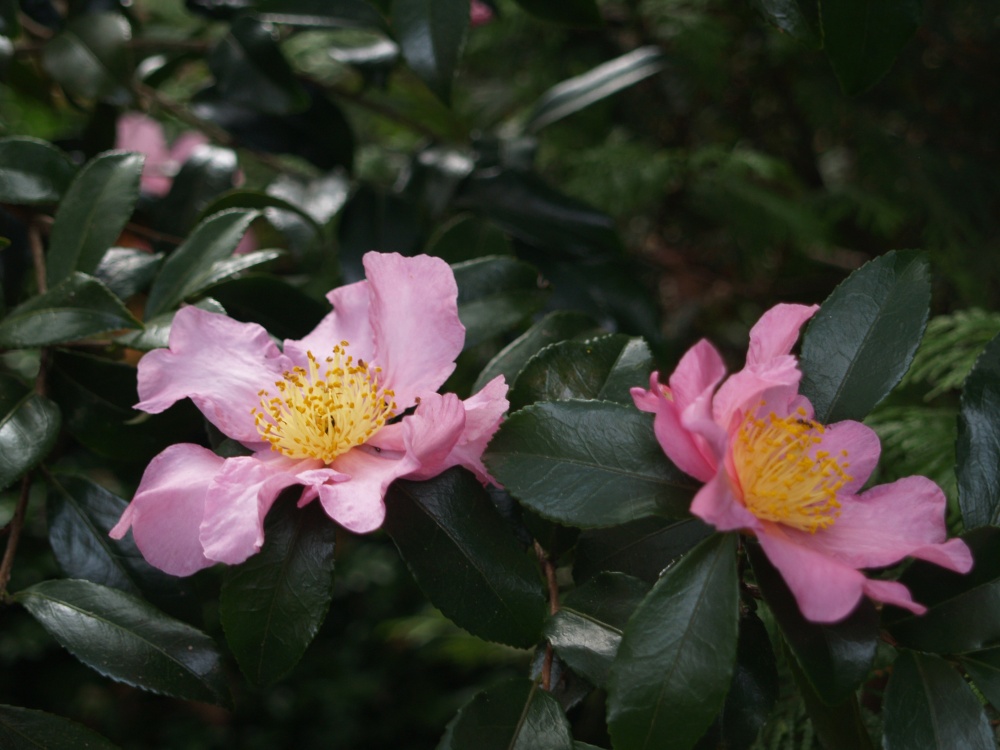This is a sad day. For several years I’ve anticipated the demise of the Franklin tree (Franklinia alatamaha, below), and finally this treasure has been cut down and chopped into pieces to be burned along with twigs and branches that have accumulated in piles through the year. The cause for the death is uncertain, though less than ideal drainage is suspected.
Franklinia is a finicky and short lived tree, so I am pleased to have enjoyed it for most of two decades. I would happily replace the Franklinia if a plump eight or ten foot tree could be located, but I expect this will be hard to come by, and probably the cost would test my resolve.
In anticipation of this day, three years ago I planted a clump of three spindly Gordlinias (x Gordlinia grandiflora, below) that have grown into a fine small tree despite suffering through recent winters. Gordlinia is a hybrid of Franklinia and the southern shrub Gordonia, and its foliage and flowers are similar enough so that I’ll not be tempted to start over with a tiny tree, or resort to spending a fortune for a replacement.
The Gordlinia has surprised in recent weeks with several flowers, which promptly wilted in the freeze, but another few buds are opening and there will be a few more flowers if this mild weather continues. While Franklinia flowered beginning in early August, Gordlinia starts a week or two earlier, but this year it flowered for several weeks, rested through the dryness of September, then began to flower again after a soaking rain. I suspect this anomaly was a result of the late summer drought, though I would miss the Franklinia less if Gordlinia flowered August into November every year.
In full bloom, flowers of several Encore azaleas (below) were damaged in the recent freeze, but with warmer temperatures that followed there will be blooms until the next bout of cold. Several cultivars are typically late flowering in this northwestern Virginia garden, with buds swelling through early autumn, but not opening unless mild weather extends into November. 
Years ago, there was reason for surprise to see a few scattered flowers on an azalea in late October. ‘Wachet’ and a few others would dependably flower in early autumn, and weather could trick a few scattered buds into bloom, but azaleas were generally expected to flower only in mid spring. No longer. Now, there are many bred to bloom in spring and again late summer into autumn.
With recent severe winters there have been no flowers on the Japanese camellias (Camellia japonica), but buds of the cold hardy hybrids (Camellia x ‘Winter’s Star’, below) develop after winter’s cold, so there are dependably flowers beginning in late October. Other hybrids planted with less sun exposure often do not flower until late November, and if winter weather cooperates there are occasional blooms into January. More rare are flowers in February, or even early March, though temperatures below ten degrees are likely to damage buds and put an end to further flowering. 
The flowers of the hybrid camellias are damaged when temperatures drop into the teens, and December and January flowers routinely turn brown along the edges until a hard freeze does them in completely. As frost and freeze force most of the garden into dormancy, the gardener must be satisfied by these few flowers through November. Later, there will be mahonias, witch hazels (Hamamelis), and winter jasmines (Jasminum nudiflorum) to flower until snowdrops (Galanthus) and hellebores signal the approach of spring.
I, too, bought and planted a Franklin Tree years ago, fascinated with the idea of a blooming tree in the fall, when almost no other trees bloom. For a year or two it was vigorous and fast growing – a joy to own! But then its leaves started wilting, and it went into continual decline until it died. Through some subsequent research, I found that the cause was verticilium wilt, and that there was NO cure! Well, except to dig it up and not to plant another one in that same spot. Maybe that disease is the reason why no more of these trees survive in the wild.
So sorry to hear of the loss of your Franklinia! But to have had it for almost 20 years is a testament to your gardening skill — the one I had years ago barely lasted two years. I didn’t try again. I hadn’t heard of the Gordlinia before; it’s very pretty.
I attribute this more to good fortune rather than skill. I recall that of twenty Franklinias delivered from a North Carolina tree grower, only a few leafed, and those barely survived the first year. The tree was planted in moist, but at the time, well drained soil that aided its survival. But, as the soil became more saturated in recent years leaves on the tree diminished in size every year.
This section of garden borders a wet weather spring that has become more active in recent years, and several large shrubs and the Franklinia have been lost from the excessive moisture. All reports I see portray Franklinia as a difficult to tree to transplant, so it seems an ideal tree to be container grown so that it does not suffer from the digging of the transplant.
I’m sorry you lost your Franklinia. I appreciate the photos and info about the differences between Franklinia and Gordlinia; most likely mine is a Gordlinia. They truly are special trees.
The differences between Franklinia and Gordlinia are not obvious through much of the year, but the influence of Gordonia is that Gordlinia is evergreen, while Franklinia is deciduous. If you’re in an area where trees drop their leaves, you should know which one you have very soon.